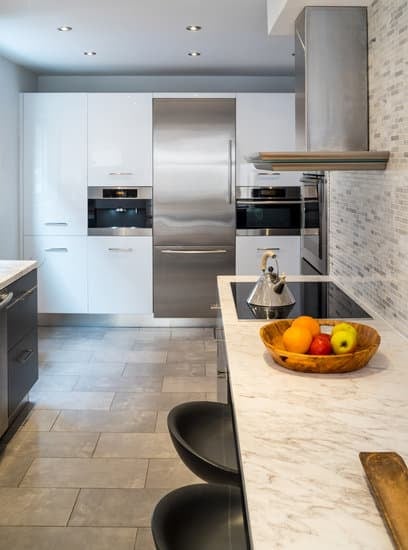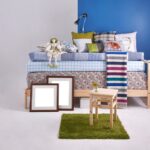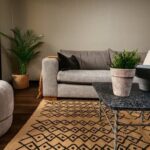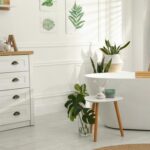Are you wondering what sewing machine needle for home decor fabrics is best for your upcoming project? Understanding the importance of using the right needle for different types of home decor fabrics is crucial for achieving professional results. From choosing the right needle size to exploring specialty options, this article will guide you through everything you need to know about selecting the perfect sewing machine needle for your home decor projects.
When it comes to home decor projects, there is a wide variety of fabrics that are used to create beautiful and functional pieces. Each fabric type poses its own unique challenges when it comes to sewing, which is why understanding how to choose the right needle is essential for success. Whether you’re working with heavy upholstery fabrics or delicate sheer materials, selecting the appropriate needle can make all the difference in achieving a flawless finished product.
In this comprehensive guide, we will delve into the different types of home decor fabrics, discuss the impact of fabric type on needle selection, explore various needle sizes and their significance, and provide tips for successful sewing with home decor fabrics. By understanding these key factors, you’ll be equipped with the knowledge and confidence to tackle any home decor sewing project with ease and precision.
Different Types of Home Decor Fabrics
Home decor projects often involve working with a wide variety of fabrics, each with its own unique characteristics and requirements for sewing. Understanding the different types of home decor fabrics is essential for selecting the right sewing machine needle to achieve professional results. Here are some common home decor fabrics and considerations for working with them:
- Upholstery Fabric: Upholstery fabric is a durable, heavyweight material used for covering furniture such as chairs, sofas, and ottomans. When sewing upholstery fabric, it’s important to use a heavy-duty needle that can penetrate multiple layers of fabric and withstand the stress of upholstery projects.
- Drapery Fabric: Drapery fabric is designed for making window treatments such as curtains and drapes. It tends to be lightweight and may have a delicate weave or texture. For sewing drapery fabric, a fine needle with a thin point is ideal to avoid damaging the fabric while creating smooth, even stitches.
- Canvas Fabric: Canvas is a sturdy, medium to heavyweight fabric often used for making slipcovers, throw pillows, and wall hangings. Sewing canvas fabric requires a strong needle that can handle the thickness of the material without breaking or bending.
Different types of home decor fabrics have specific requirements when it comes to selecting the right sewing machine needle. By understanding the characteristics of upholstery fabric, drapery fabric, canvas fabric, and other materials commonly used in home decor projects, you can make informed decisions about which needle will best suit your sewing needs.
Choosing the Right Needle for Different Fabric Types
When it comes to sewing home decor fabrics, it is crucial to understand the impact of fabric type on needle selection. Different types of home decor fabrics, such as cotton, linen, silk, velvet, and upholstery fabrics, each require a specific type of needle to ensure professional results. Choosing the right needle for different fabric types can make a significant difference in the outcome of your sewing project.
Impact of Fabric Type on Needle Selection
The type of fabric being used greatly determines which needle is most suitable for the project. For example, lightweight and delicate fabrics like silk or chiffon require a fine and sharp needle to prevent snagging or creating visible holes. On the other hand, heavy and dense fabrics like upholstery or denim necessitate a stronger and thicker needle that can penetrate multiple layers without breaking.
Needle Type for Specialty Fabrics
In addition to standard home decor fabrics, specialty fabrics like faux leather or sequined material also require special consideration when it comes to needle selection. For these unique materials, it is best to use specialized needles designed specifically for sewing through tough surfaces or avoiding damage to delicate embellishments.
Essential Tips for Successful Sewing
To ensure successful sewing with different fabric types, it’s important to match the needle size and type with the fabric weight and texture. Using the wrong needle can result in skipped stitches, thread breakage, or even damage to the fabric.
Additionally, always test your chosen needle on a scrap piece of fabric before starting your project to confirm it is suitable for the material at hand. By paying close attention to these details, you can achieve professional-looking results in your home decor sewing projects.
Needle Sizes and Their Significance
When working on home decor projects, it’s essential to understand the importance of using the right sewing machine needle for different fabric types. One crucial factor to consider when selecting a needle is its size, as this directly correlates with the weight of the fabric being used. The following are some key points to remember when determining which needle size to use for specific home decor fabrics:
- Lightweight Fabrics (e.g. silk, chiffon, organza): For delicate and lightweight fabrics, it’s best to use a smaller needle size such as 9 or This helps prevent any damage or distortion to the fabric while ensuring smooth and precise stitching.
- Medium-weight Fabrics (e.g. cotton, linen, velvet): When working with medium-weight fabrics commonly used in home decor projects, a needle size ranging from 12 to 14 is recommended. This allows for efficient penetration through the fabric without causing any puckering or skipped stitches.
- Heavyweight Fabrics (e.g. denim, upholstery fabric): For heavyweight fabrics like denim or upholstery material, a larger needle size such as 16 or 18 is ideal. The increased strength and thickness of these needles can easily handle the density of these fabrics while producing neat and sturdy seams.
It’s important to note that using the correct needle size not only ensures optimal stitching results but also helps prevent potential damage to both the fabric and the sewing machine. Using an improperly sized needle can lead to breakage or bending of the needle, resulting in uneven stitching and potential machine malfunctions.
In addition to considering fabric weight, factors such as thread type and project complexity should also be taken into account when selecting a suitable needle size. By understanding the correlation between needle sizes and fabric weight, home decor enthusiasts can achieve professional-quality results in their sewing endeavors.
Specialty Needles for Home Decor Projects
Embroidery Needles
When it comes to adding decorative stitches or embellishments to home decor fabrics, embroidery needles are essential. These needles have a larger eye to accommodate thicker embroidery threads and are designed to prevent snagging or shredding of specialty threads.
Choosing the right embroidery needle size depends on the weight of the fabric and the type of thread being used. For lighter weight fabrics, a smaller needle size is suitable, while heavier fabrics may require a larger needle to prevent damage or distortion.
Topstitching Needles
For achieving professional-looking topstitching on home decor projects, using the appropriate needle is crucial. Topstitching needles have a larger eye to accommodate heavier decorative threads and are designed to create even, precise stitches on the surface of the fabric.
The sharp point of these needles allows them to pierce through multiple layers of fabric without causing any skipped stitches or puckering. When selecting a topstitching needle, consider the weight and thickness of the fabric, as well as the type of thread being used for best results.
Quilting Needles
Quilting is often incorporated into home decor projects such as throw pillows or table runners. Quilting needles are specifically designed to sew through multiple layers of fabric and batting without causing any distortion or drag.
These needles have a tapered point to easily penetrate through layers and prevent undesired shifting during quilting. When working with heavy fabrics for quilted home decor items, choosing a quilting needle that can handle the thickness and density of the materials is essential for achieving professional results.
Tips for Successful Sewing With Home Decor Fabrics
Choosing the right sewing machine needle for home decor fabrics is crucial in achieving professional results. When working with home decor fabrics such as upholstery, drapery, or canvas, it’s important to consider the fabric type and weight to determine the appropriate needle to use. In addition to using the correct needle, there are several tips that can help ensure successful sewing with home decor fabrics.
One important tip for sewing with home decor fabrics is to use the correct thread and stitch length. For heavier fabrics like canvas or upholstery, a thicker thread and longer stitch length may be more suitable to ensure strong and durable seams. Additionally, adjusting the tension of your sewing machine can also make a difference in achieving professional-looking results.
Another essential tip is to take your time when sewing with home decor fabrics. These fabrics are often thicker and heavier than regular apparel fabric, so rushing through a project can lead to uneven stitching or even damage to your machine. Slow and steady stitching will not only produce better results but also prolong the life of your sewing machine.
Lastly, practicing good pressing techniques can greatly improve the overall look of your home decor projects. Using a pressing cloth and steam iron can help flatten seams and create crisp edges, giving your finished project a polished appearance. By following these practical tips, you’ll be able to achieve professional results when sewing with home decor fabrics.
| Tip for Sewing With Home Decor Fabrics | Importance |
|---|---|
| Use correct thread and stitch length | Ensures strong and durable seams |
| Take your time when sewing | Prevents uneven stitching or damage to the machine |
| Practice good pressing techniques | Improves overall look of projects |
Maintenance and Care for Sewing Machine Needles
Sewing machine needles are an essential part of any sewing project, especially when working with home decor fabrics. To ensure the longevity and quality of your sewing machine needles, it is crucial to maintain and care for them properly. Proper maintenance not only extends the life of your needles but also ensures that your sewing projects are of the highest quality.
One important aspect of needle care is to always use the right needle for the fabric you are working with. Using an incorrect needle can result in bent or broken needles, as well as uneven stitching. Additionally, be sure to change your needle after every 8-10 hours of sewing, or when switching to a different fabric type. This will help prevent skipped stitches and puckered fabric.
In addition to using the right needle and changing it regularly, it’s important to keep your sewing machine well-maintained. Clean out lint and dust from the bobbin area and feed dogs regularly, as well as oiling the machine according to the manufacturer’s instructions. These maintenance tasks will not only keep your machine running smoothly but also prevent any damage to your needles during use.
| Aspect of Needle Care | Importance |
|---|---|
| Using the right needle for fabric | Prevents breakage and ensures even stitching |
| Regularly changing needles | Prevents skipped stitches and puckered fabric |
| Sewing machine maintenance | Prevents damage to needles during use |
Conclusion
In conclusion, choosing the right sewing machine needle for home decor fabrics is crucial in achieving professional and high-quality results. As discussed in this article, there are different types of home decor fabrics, each requiring a specific needle type for optimal sewing performance. The correlation between fabric type and needle selection was emphasized, highlighting the impact of using the appropriate needle size and specialty needles for specific tasks like embroidery or topstitching.
Understanding the significance of needle sizes in relation to fabric weight is essential for successful sewing with home decor fabrics. By selecting the right needle size, sewers can ensure that they are able to accommodate heavier or lighter weight fabrics, resulting in cleaner and more precise stitching. Additionally, the use of specialty needles for tasks such as quilting or working with delicate fabrics was also addressed, demonstrating how these specialized tools can improve overall sewing outcomes.
Lastly, maintenance and care for sewing machine needles were highlighted as important factors for longevity and quality sewing. By following practical advice on how to properly care for needles, sewers can prolong their lifespan and avoid issues such as skipped stitches or fabric damage.
In summary, using the appropriate needle for home decor sewing projects is not only valuable but essential in achieving professional results. With a better understanding of the different types of needles available and their compatibility with various fabric types, sewers can take their home decor projects to the next level.
Frequently Asked Questions
What Size Sewing Machine Needle Do You Use for Upholstery Fabric?
When sewing upholstery fabric, it’s important to use the right size needle to ensure proper stitching. Typically, a size 18 or 19 needle is recommended for upholstery fabric, as it is heavier and requires a stronger needle to penetrate the material.
Using a smaller needle may result in breakage or skipped stitches, so a larger size is more suitable for this type of fabric.
What Needle Should I Use for Each Fabric?
Choosing the right needle for each type of fabric is essential for achieving good results in your sewing projects. For lighter weight fabrics like silk or chiffon, a finer needle such as a size 9 or 11 is ideal to prevent snagging or pulling.
Medium-weight fabrics like cotton or linen work well with size 12 or 14 needles, while heavier fabrics like denim or canvas require larger sizes such as 16 or 18 to sew effectively.
What Is a 90 14 Needle Used For?
A 90/14 needle is commonly used for medium-weight fabrics such as cotton, polyester, and rayon. This type of needle has a slightly rounded point which makes it versatile enough to work with different types of woven fabrics without causing damage. It’s a good choice for everyday sewing projects and can handle medium-weight materials with ease.

I’m thrilled to be your companion on this exciting journey through the world of home decor and design. With a passion for turning houses into homes and a keen eye for the finer details, I’m here to help you transform your living spaces into beautiful, functional, and meaningful havens.





